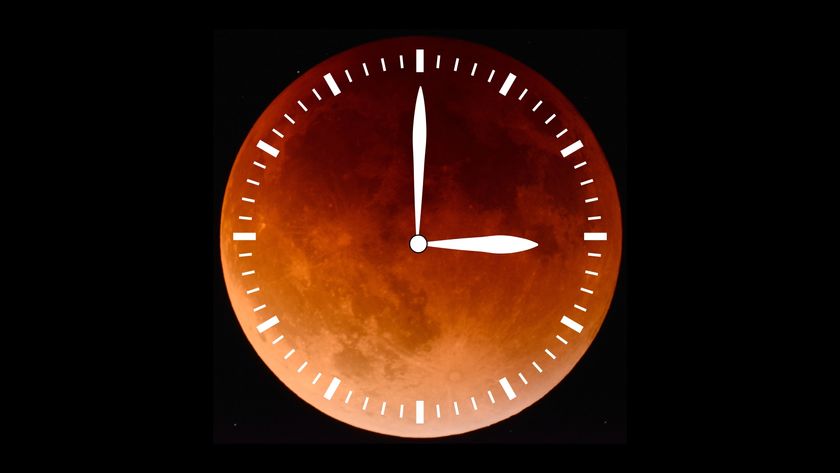Listening for ET’s Television
The firstepisode of "I Love Lucy" was broadcast sometime on October 15, 1951. About 0.0002 seconds later, the signal glided over therooftops of the farthest city suburbs, and headed into space.
It's stillgoing. Every day, that first installment passes through an additional 4thousand trillion trillion trillion cubic kilometers of the cosmos.
Given thatstars in our galactic neighborhood are separated by about 4 light-years, it'seasy to figure that roughly 10 thousand star systems have been exposed to "ILove Lucy" in the past five decades. That may suggest a high Nielson rating,but the chance that extraterrestrials are now hooked on 1950s television islow. Look at it this way: Carl Sagan, who was singularly optimistic about suchthings, figured that the number of technically competent societies in ourGalaxy was a million or more. That's a lot. But even so, it would imply thatonly one in every few hundred thousand star systems would actually boast such asociety. Consequently, there's little probability that hairless gray guys arepuzzling over the domestic difficulties of Lucy and Ricky, a fact that no doubtwill disappoint the advertisers.
Thewidespread use of television on Earth is a phenomenon of the lasthalf-century. But the cosmos is three times as old as our planet. So therecould be galactic civilizations that have been churning out sitcoms forthousands of years or more - time enough for the signals to reach our world.
This possibilitywas evidently on the mind of Abraham Loeb at Harvard University, who recently noted in the NewScientist that a radio telescope being built to study distant galaxiesmight also be able to pick up ET's TV. The so-called Low-Frequency Array(LOFAR), a telescope consisting of 25 thousand tent-shaped antennas spreadacross Holland and Germany, can be tuned to frequencies under 250 megahertz. This is aspectral range far below what's usually searched by SETI, but it's the band inwhich much of your local television is broadcast. And maybe theirs, as well.
So howrealistic is this? Could LOFAR really pick up "I Love Zork"?
To answerthat question requires doing some numbers (you can read through this quickly ifquantitative arguments cause your brain to idle).
Get the Space.com Newsletter
Breaking space news, the latest updates on rocket launches, skywatching events and more!
First, wereverse the situation, just to see if tuning in remote TV makes sense. Imaginethat there are alien couch potatoes 55 light-years away who, bored with theirown Fall lineup, have constructed a LOFAR-style antenna in hopes of picking up"I Love Lucy's" debut. Hunky TV transmitters on Earth belch out a few hundredthousand watts of power. That energy is not beamed in all directions equally;most of it is aimed around the horizon (which, of course, is where the audienceis). Because of this slight beaming, the effective transmitter power is a bitmore: let's say a million watts, to keep the math simple.
OK, howstrong is that signal by the time it reaches our putative alien audience at 55light-years distance? Not very. The megawatt broadcast washes over ET's worldwith a power density of about 0.3 million million million million millionths ofa watt per square meter, which is not exactly a scorching signal. Actually,only about a third of that transmission power is in the "carrier" - the part ofthe broadcast that's very narrow in frequency and easily detected. So knockthat piddling power density down by another factor of three if you want to knowthe strength of the easily detectable part of the transmission. (Of course, ifthey only find the carrier, they won't get the picture and sound. But Lucy'sjokes might not appeal to aliens anyway.)
Could theirLOFAR-style antenna find that carrier, thereby indicating that a program was onthe air? Well, engineers have computed that at the frequency of VHF television,LOFAR will have an effective collecting area similar to that of the 305-meterdiameter Arecibo antenna in Puerto Rico.
That'sbig. That's brawny. But not brawny enough. In our SETI experiments at Arecibo, we could find a signal if it wereabout 0.1 million million million millionths of a watt per square meter. Thatnumber, you will notice if you count up the words, is a million times biggerthan the "I Love Lucy" carrier at 55 light-years. The aliens' LOFAR would be inadequateto detect the broadcast by a factor of a million, a not entirely negligibleamount. Simply stated: LOFAR couldn't hear it.
So here'sthe bottom line: LOFAR would only be able to find TV signals comparable to oursfrom a distance of much less than one light-year! Turning this around,the mother of all rabbit ears couldn't pick up the Alien Broadcasting Networkat the distance of even the nearest star.
Disappointing,but you might argue that the extraterrestrials will have much, much more powerfulTV transmitters than we do. In fact, their broadcasts would have to bemillions of times more powerful to even produce a blip on LOFAR, which seems abit silly and likely to set alien roofs on fire.
Now Loebpoints out that LOFAR and other large telescopes now being planned can stare atthe same spot on the sky for months or years. That allows a signal to build up,making even weak transmissions visible. After a year of staring, LOFAR'ssensitivity will be several hundred times better than our work at Arecibo. That's the good news. The badnews is that it's still inadequate to hear TV transmitters similar to our own.
But there'sanother point, and one that's possibly of greater significance. The whole ideaof television broadcasting may be passe for the aliens. Consider: how do youpick up your daily dose of boob-tube fodder? With a rooftop antenna strappedto your chimney? Probably not. You most likely get your TV via a cable, fiberoptic, or direct broadcast satellite dish. The powerful televisiontransmitters on the hills outside town are going to vanish in the next fewdecades. They likely vanished long ago on ET's world.
So whileit's certainly an excellent idea to look for cosmic signals at low frequencies,it's unlikely that any will resemble the type of entertainment we still loftinto the skies here on Earth. And some would say that's reassuring.
- All About SETI
- Shadows and Silhouettes: Looking for Transits
- Images: Venus Transit Gallery
- Detecting Other Worlds: The Transit or 'Wink' Method
- Way-Out World: New Technique Finds Most Distant Planet Ever
- Mercury Transits Sun, Images on Web
Join our Space Forums to keep talking space on the latest missions, night sky and more! And if you have a news tip, correction or comment, let us know at: community@space.com.

Seth Shostak is an astronomer at the SETI (Search for Extraterrestrial Intelligence) Institute in Mountain View, California, who places a high priority on communicating science to the public. In addition to his many academic papers, Seth has published hundreds of popular science articles, and not just for Space.com; he makes regular contributions to NBC News MACH, for example. Seth has also co-authored a college textbook on astrobiology and written three popular science books on SETI, including "Confessions of an Alien Hunter" (National Geographic, 2009). In addition, Seth ahosts the SETI Institute's weekly radio show, "Big Picture Science."











